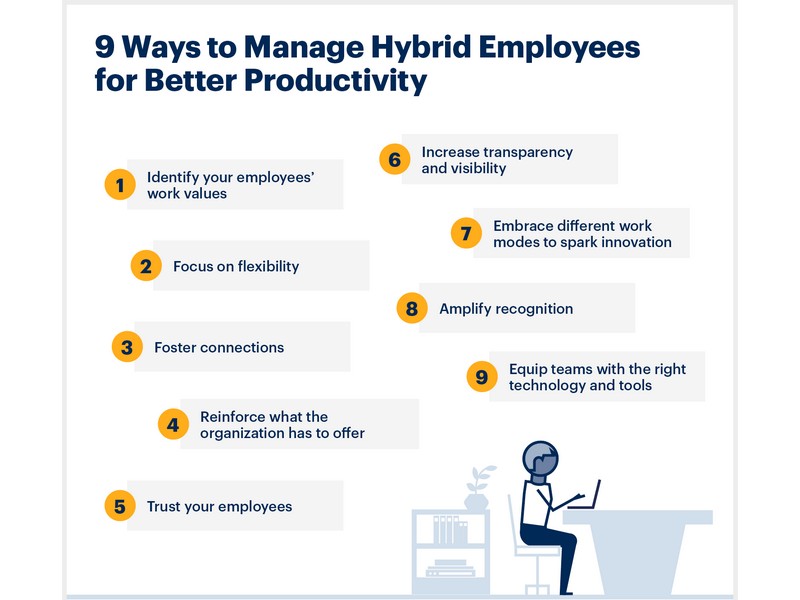Attendance Management for Remote Teams: Challenges and Solutions

Attendance Management for Remote Teams: Challenges and Solutions
In the wake of the COVID-19 pandemic, remote teams have become a pervasive and integral part of the modern workforce. What was initially adopted as a temporary measure to curb the spread of the virus has evolved into a permanent shift in how businesses operate. As companies embraced the benefits of remote work, challenges arose, and one critical aspect that often gets overlooked is attendance control. In this article, we’ll delve into the challenges and solutions surrounding attendance management for remote teams, exploring the intricacies of this vital aspect of workforce management.
Benefits of Remote Teams
Before we plunge into the challenges, let’s take a moment to acknowledge the substantial benefits that come with embracing remote work. The rise of remote teams post-COVID-19 has been fueled by the realization that employees can effectively contribute to their roles from the comfort of their homes. This shift has ushered in an era of increased flexibility, global talent access, cost savings, and improved employee retention.
Here at Atwork, we are experiencing this paradigm shift firsthand. More and more companies in the Netherlands and Iran, countries we are currently operating in, prefer remote work over bringing their employees to the office. This drastic shift will be clear when we look at the benefits of remote work for businesses and employees.

Flexibility and Work-Life Balance
The flexibility offered by remote work extends beyond choosing where to work. Employees can tailor their work hours to suit their individual preferences and life circumstances. This autonomy boosts job satisfaction and fosters a healthier work-life balance. Picture Sarah, a marketing specialist, seamlessly integrates her work with personal commitments, increasing job satisfaction and overall well-being.
Access to Global Talent
Geographical barriers no longer limit businesses in the hunt for top talent. Remote work provides unparalleled access to a diverse pool of global professionals. James, a developer in Tokyo, becomes an invaluable asset to a company based in New York, showcasing how businesses can tap into a wealth of skills and perspectives from around the world.
Cost Savings
The financial benefits of remote work are multifaceted. Beyond the obvious reduction in office-related costs, remote work contributes to substantial savings for both businesses and employees. Companies save on overhead expenses, while employees experience reduced commuting costs and a decrease in everyday expenses associated with office-based work. This dual advantage leads to a more economical operation overall.
Better Employee Retention
Remote work has a positive impact on employee retention. The flexibility and autonomy offered contribute to a more positive work culture, reducing turnover rates. Employees like Emily, a content creator, find increased job satisfaction in the remote work model, fostering a sense of loyalty and commitment to their current employer. The result is a more stable and content workforce.
Challenges of Remote Teams
However, just like any paradigm shift in business, the advent of remote teams comes with its unique set of challenges. Once we understand the benefits, we must address the hurdles organizations may face in managing remote teams effectively.
Coordinating Schedules
Ensuring team members work during agreed-upon hours can be a logistical challenge. Diverse time zones and personal preferences for work hours make finding a balance that accommodates everyone essential.
Communication Barriers
The lack of face-to-face communication can hinder effective collaboration. Misinterpretation of messages and the absence of non-verbal cues may result in misunderstandings and affect the quality of work. Imagine a misinterpreted email leading to a misalignment in project goals between the marketing and design teams, showcasing how communication barriers can impact remote teamwork.
Coordinating Tasks and Projects
Assigning and tracking tasks becomes more challenging when team members are not physically present. Clear communication and efficient project management tools become imperative to ensure tasks are completed on time.
Conducting Effective Team Meetings
Conducting engaging and productive team meetings requires thoughtful planning and the right tools. Without a physical meeting space, ensuring everyone is involved and on the same page can be a challenge.
Lack of Supervision
The absence of direct supervision can lead to concerns about productivity and accountability. Managers may find it challenging to gauge the performance of their team members without traditional office oversight.
Attendance Management
One of the critical challenges faced by remote teams is effectively managing and tracking attendance. Keeping tabs on when team members start and end their workdays can be challenging without a physical presence.
Leave Time Management
Managing leave requests and ensuring proper coverage during team members’ absences can be a logistical headache without a centralized system in place. Imagine Emily forgetting to inform her team about taking a day off, resulting in last-minute adjustments and a backlog of unfinished tasks, emphasizing the need for streamlined leave time management in remote teams.

How to Overcome the Challenges of Remote Teams
Acknowledging these challenges is the first step toward finding viable solutions. As businesses and managers seek the benefits of remote work, they must also implement effective tools and strategies to address these obstacles. This is where Atwork, a comprehensive business management software, comes into play.
Atwork, the Best Software for Attendance and Leave Management
Atwork is a game-changer in overcoming the challenges of managing remote teams, explicitly focusing on attendance and leave management. This powerful business management software offers a range of features that streamline the process of tracking employee time, attendance and leave. This feature is just a tiny part of the suite of tools that Atwork offers to businesses. Here at Atwork, we strive to provide an all-in-one solution for workplace management to eliminate the need and the confusion that comes with using multiple software for various goals in a business.
Clock-In and Task Tracking
Atwork simplifies attendance management by allowing employees to clock in when they start working and specify their tasks. This feature ensures accurate attendance records and provides insights into individual and team productivity.
Imagine this scenario – Sarah, a marketing specialist working remotely, starts her workday and effortlessly clocks in using Atwork. This real-time tracking gives her manager, Mark, instant visibility into her availability and the tasks she’s working on. Mark can seamlessly monitor Sarah’s progress, ensuring that projects stay on schedule and that every minute of Sarah’s valuable time is utilized effectively.
Profile Management
Each team member has a dedicated profile on Atwork, enabling authorized personnel to monitor their activities. This profile management feature promotes transparency and accountability within the team, fostering a culture of responsibility.
Picture this: James, a developer in Tokyo, has a profile on Atwork that is accessible to his project manager, Emma. Despite the physical distance, Emma can quickly check James’s profile to see how he’s handling his tasks and projects. This visibility allows for proactive management, ensuring everyone is on the same page, and work progresses smoothly without any unnecessary roadblocks.
Historical Records
Atwork maintains comprehensive historical records of attendance and tasks. This is a valuable resource during performance evaluations, project assessments, and reevaluating processes. Delving into historical data provides a holistic view of team members’ contributions. This transparency helps identify areas for improvement and celebrate successes within the team.
Visualize this scenario – Mark, the team leader, is evaluating the performance of his remote team. With Atwork’s historical records feature, he can review each team member’s past activities and contributions. This retrospective analysis helps Mark identify areas for improvement, recognize outstanding performance, and make informed decisions to enhance overall team efficiency, all based on concrete data.
Disclaimer: This feature is still under development. Stay tuned for its announcement and deployment.

Leave Request Management
Managing leave requests becomes streamlined with Atwork. Team members can easily submit requests for leave, sick days, or other time-off requirements through the software. This makes the process transparent and significantly eases the burden of leave time management for both employees and managers.
Picture this – Emily, a content creator, needs to take a day off for personal reasons. Instead of navigating a complicated leave request process, she uses Atwork to submit her request seamlessly. The transparent nature of the system ensures that her team is aware of her absence in advance, allowing for proper planning and preventing any disruption in ongoing projects. This scenario showcases how Atwork simplifies the often cumbersome leave management process.
Pricing Structure
To make Atwork Attendance accessible, teams of up to three members can use the software for free, making it an ideal solution for startups and small businesses. Atwork offers various affordable plans for larger teams, ensuring scalability based on the organization’s needs.
With Atwork, employees can easily clock in when they start working, providing real-time data on their availability and activities. Each team member has a profile accessible to authorized personnel, allowing managers to monitor progress and ensure that work is done efficiently.
To make it even more enticing, Atwork offers free access for teams of up to three members, enabling small businesses and startups to benefit from its features without breaking the bank. Larger teams can explore the various plans available for purchase, tailored to meet their organization’s specific needs.
Imagine this scenario – a startup with a team of three members is looking for an efficient attendance and leave management solution. Atwork’s offer of free access for teams of up to three members is a cost-effective solution. This enables small businesses to enjoy the benefits of comprehensive business management software without incurring additional expenses. It’s a practical and economical choice for startups aiming to optimize their workforce management from the get-go.
Atwork is a Work in Progress
As we navigate the evolving landscape of remote work, Atwork is not a static solution but a dynamic, ever-improving platform. The challenges and scenarios we’ve explored here are just the tip of the iceberg, and Atwork is committed to growing and adapting alongside the changing needs of remote teams.
Atwork acknowledges that the digital realm is continuously advancing, and the software is designed with scalability and flexibility in mind. The team behind Atwork is dedicated to refining its features, addressing emerging challenges, and incorporating valuable user feedback. As technology evolves, so does Atwork, ensuring that it remains at the forefront of attendance and leave management solutions for remote teams.
So, as you explore the benefits, challenges, and solutions presented by Atwork, remember that this is not the final destination but a journey of continuous enhancement. Embrace the present capabilities, knowing that Atwork is diligently working behind the scenes to make your remote team management experience even better day after day. Stay tuned for updates because the story of Atwork is a story of progress, innovation, and an unwavering commitment to the success of remote teams in the modern era.
If you are thinking about incorporating remote teams in your business, you can use our guide to managing remote teams to start your journey.